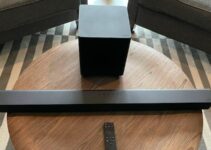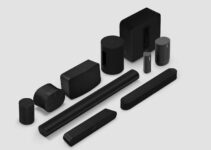So you connected your Steam VR Headset and you get a “headset not detected” message? Well, no worries! There can be a number of reasons why this is happening and most of them are simple issues that would only take a few minutes to fix.
Whether you’re facing a complex problem or not, you will find all the right fixes to apply to get your Steam VR headset working again.

Steam VR Headset Not Detected: Likely Causes
- Connection Issues: The first and most common reason why your Steam VR headset may not be detected is due to connection issues. Sometimes, the cables may have been loosened or unplugged from the headset or the PC, so your headset will not be detected. This is the first thing you should check and in most cases, you could fix the problem in a jiffy.
- Software Issues: Another reason for the Steam VR headset not being detected is related to software issues. This can happen when the software required to run the VR headset is outdated, damaged, or not properly installed.
- Driver Issues: The drivers for your VR headset may not be properly installed or outdated, causing the headset to not be detected. If your computer is not detecting the VR headset, check if the drivers are properly installed or if there are any updates available.
- USB Port Issues: Sometimes, your USB port may be malfunctioning or not properly configured. This can happen if the USB port is not supplying enough power, or if it is not compatible with the VR headset.
- Hardware Issues: There may be some hardware issues with your VR headset that can cause it not to be detected. This could be physical damage, such as broken cables or damaged ports.
- Steam VR Software Configuration: Your Steam VR software may not be properly configured, so you would have to set it up correctly.
- Firewall or Antivirus Software: If you have a firewall or antivirus software installed on your computer, it may be blocking the VR headset from being detected. Fixing this would be extremely easy. You simply need to ensure that the VR headset is listed as a trusted device in your firewall and antivirus software.
Steam VR Headset Not Detected: DIY Fixes
Connection Issues
The fits troubleshooting tip to apply would be to check the connections. To check the connections, you can follow these instructions
- Ensure that the USB and HDMI cables are properly connected to the VR headset and your PC.
- You might also want to try using a different USB and HDMI port to see if that solves the issue.
- Check the cable for any damage. If you notice any signs of frayed or broken wires, it means that the cable is damaged and would have to be replaced.
Software Issues
Software issues are due to a problem with the headset software. This is usually common with headsets that have not been updated for a while. You can follow the steps below to ensure that your Steam VR software is up to date. To do this,
- Open the Steam VR app and click on the “SteamVR” tab.
- Select “Check for Updates” and follow the on-screen instructions.
- Try restarting the Steam VR software and your PC.
If the issue persists, try uninstalling and reinstalling the Steam VR software. To do this,
- Go to the “Library” tab in the Steam app, right-click on “SteamVR,” and select “Uninstall.”
- Once it’s uninstalled, go back to the “Library” tab and click “Install” to reinstall the software.
Driver Issues
Outdated drivers could also cause problems that will also cause issues like Steam VR Headset not detecting when plugged in. To resolve this, you need to ensure that the drivers for your VR headset are up to date.
To do this:
- Go to the website of your VR headset manufacturer and search for the latest drivers for your device.
- If the drivers are up to date, you can try uninstalling and reinstalling them. To do this,
- Go to the “Device Manager” on your PC, right-click on your VR headset, and select “Uninstall Device.”
- When done with that, restart your PC and reinstall the drivers.
USB Port Issues
The USB Port could pose a problem if it is not compatible with the VR headset or not supply enough power. You can perform the following checks to rule out this issue:
- Ensure that the USB port you are using is compatible with your VR headset. Some VR headsets require USB 3.0 or higher.
- Try using a different USB port to see if that solves the issue.
- If the USB port is not supplying enough power, try using a powered USB hub.
Hardware Issues
Hardware issues usually indicate a more serious problem that would require a technician or a call to the manufacturer. However, this doesn’t mean you should skip on this one. You can check for hardware issues using these steps:
- Inspect the VR headset and confirm that there is no physical damage, such as broken cables or damaged ports.
- Try using the VR headset with a different computer to rule out any hardware issues with the headset itself.
Steam VR Software Configuration
To properly configure the Steam VR software apply the following steps:
- Open the Steam VR app and click on the “Settings” tab.
- Under the “General” tab, ensure that the correct VR headset is selected.
- Under the “Developer” tab, ensure that the “Direct Mode” is enabled.
- If the issue persists, try resetting the Steam VR software configuration by clicking on the “Reset” button under the “Developer” tab.
Firewall or Antivirus Software
Though this is not common, your access to the Steam VR headset might be blocked by a firewall or your antivirus settings. You can use the following steps to fix it:
- Add the Steam VR software to the list of exceptions in your firewall and antivirus software.
- Temporarily disable your firewall and antivirus software to see if that solves the issue.








